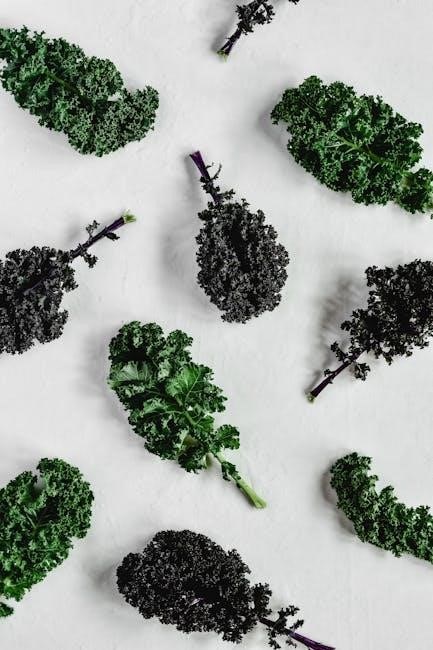
A dietary approach focusing on reducing histamine intake to alleviate symptoms of histamine intolerance and mast cell activation. Emphasizes fresh, whole foods to promote better health and well-being.
What is Histamine and Its Role in the Body
Histamine is a neurotransmitter and immune system chemical stored in mast cells. It plays a key role in allergic reactions, digestion, and immunity. Released in response to triggers, histamine causes blood vessels to dilate, leading to symptoms like itching, swelling, and stomach issues. Elevated histamine levels can cause intolerance, affecting digestion, skin, and respiratory health, prompting dietary adjustments to manage symptoms effectively.
Understanding Histamine Intolerance and Its Symptoms
Histamine intolerance occurs when the body struggles to break down excess histamine, often due to enzyme deficiencies. Symptoms include digestive issues, skin rashes, headaches, and respiratory discomfort. Severe cases may involve cardiovascular effects. Managing this condition often requires adopting a low-histamine diet to reduce symptoms and improve quality of life. Early recognition and dietary adjustments are crucial for effective symptom control and overall well-being.
Benefits of a Low Histamine Diet
This diet can alleviate histamine intolerance symptoms, improve digestion, and reduce inflammation. It helps manage conditions like mast cell activation syndrome, enhancing overall well-being and energy levels naturally.
Reducing Symptoms of Histamine Intolerance
A low histamine diet helps alleviate symptoms like digestive issues, skin rashes, and respiratory problems. By minimizing histamine intake, it reduces inflammation and eases discomfort, improving overall well-being and energy levels. This approach is particularly beneficial for managing conditions such as mast cell activation syndrome, offering a natural way to mitigate histamine-related discomfort and promote long-term health.
Managing Conditions Like Mast Cell Activation Syndrome
A low histamine diet is crucial for managing mast cell activation syndrome, as it reduces histamine overload. By avoiding high histamine foods and focusing on fresh, whole ingredients, individuals can stabilize mast cells and alleviate symptoms like inflammation and allergic reactions. This dietary approach, often tailored with professional guidance, helps maintain long-term health and well-being for those with mast cell disorders.
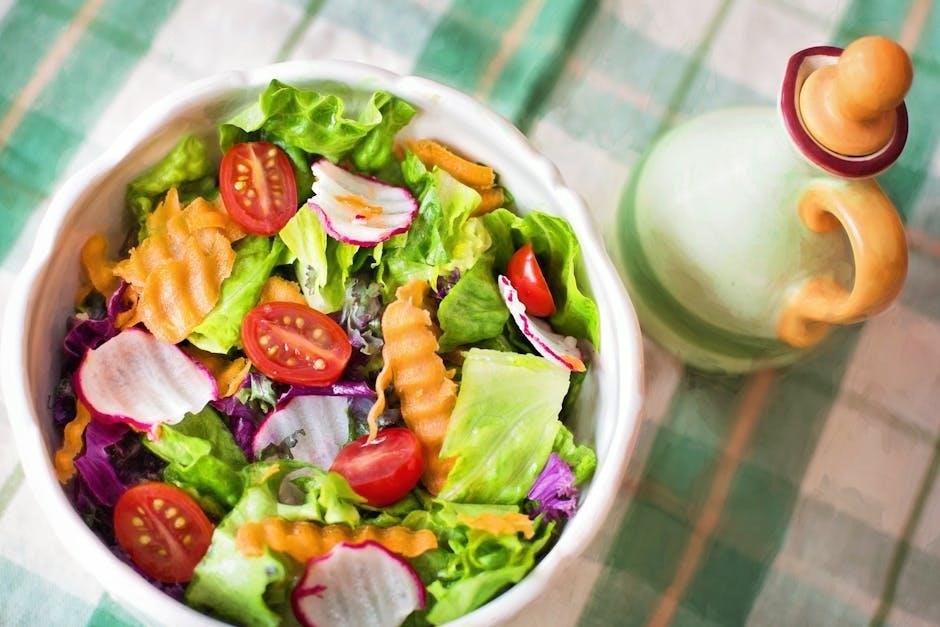
Foods Allowed on a Low Histamine Diet
Fresh meats, certain fish, fruits like apples and mangoes, vegetables, eggs, and healthy fats are permitted. Focus on fresh, whole, and unprocessed foods to minimize histamine intake.
Fresh Meats and Poultry
Fresh meats like beef, turkey, and lamb are staples of a low histamine diet. Opt for freshly slaughtered options and store them properly to avoid histamine buildup. Poultry, such as chicken, is also allowed. Ensure meats are cooked soon after purchase to maintain freshness and reduce histamine accumulation. Avoid aged or processed meats, as they typically contain higher histamine levels.
Low Histamine Fish Options
Certain fresh or frozen fish are ideal for a low histamine diet. Species like hake, trout, and plaice are recommended. Avoid aged, canned, or fermented fish, as they tend to have higher histamine levels. Fresh fish should be consumed quickly and stored properly to prevent histamine accumulation. These options provide essential protein without triggering intolerance symptoms, making them a great addition to meal plans.
Approved Fresh Fruits and Vegetables
Fresh fruits like apples, mangoes, and berries are low in histamine and suitable for the diet. Vegetables such as leafy greens, cucumbers, and bell peppers are also recommended. Avoid plantains and fermented or aged produce, as they may contain higher histamine levels. These fresh options provide essential nutrients and flavors, supporting overall health while adhering to dietary restrictions.
Healthy Fats and Fresh Herbs
Healthy fats like coconut oil, olive oil, and avocado are histamine-friendly and essential for nutrition. Fresh herbs such as basil, mint, and parsley add flavor without triggering issues. These ingredients enhance meals and provide necessary nutrients, supporting a balanced low-histamine diet while ensuring variety and taste in daily cooking.
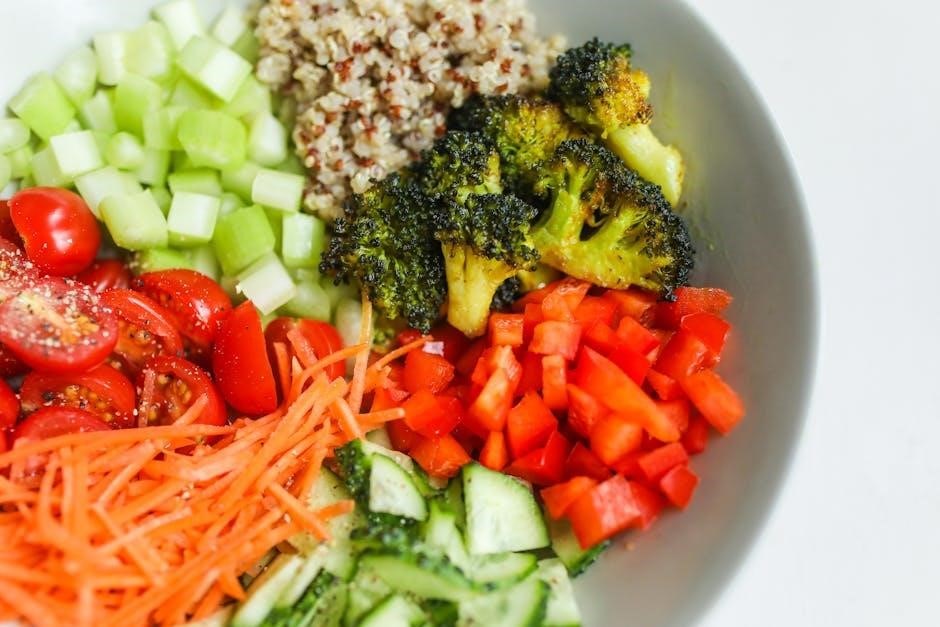
Foods to Avoid on a Low Histamine Diet
Certain foods, such as aged cheeses, fermented items, and processed meats, are high in histamine and should be avoided to prevent intolerance symptoms and discomfort.
High Histamine Foods and Beverages
Foods high in histamine include aged cheeses like Parmesan, fermented items such as sauerkraut, processed meats like salami, and certain fish like mackerel. Beverages like red wine and beer are also high in histamine. These foods can trigger symptoms in individuals with histamine intolerance, making it crucial to limit or avoid them to manage symptoms effectively and maintain overall well-being.
Processed and Fermented Foods
Processed and fermented foods are high in histamine due to bacterial fermentation. Examples include sauerkraut, kimchi, salami, and canned goods. These foods should be avoided to reduce histamine intake and alleviate symptoms. Fresh, unprocessed foods are recommended instead to maintain a balanced and low-histamine diet, promoting better health and symptom management.
Canned and Aged Foods
Canned and aged foods are high in histamine due to prolonged storage and natural decomposition. Examples include aged cheeses, canned tuna, and processed meats. These foods can trigger symptoms in sensitive individuals. Opting for fresh alternatives and proper food storage can help minimize histamine intake, supporting a balanced low-histamine diet and reducing discomfort for those with histamine intolerance.
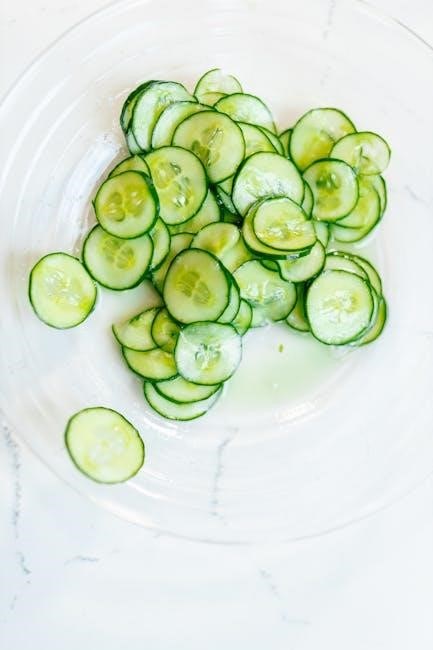
Cooking Tips for a Low Histamine Diet
Opt for fresh, whole ingredients and avoid leftovers. Use non-reactive cookware and gentle cooking methods to preserve nutrients and minimize histamine release during preparation.
Importance of Fresh Ingredients
Fresh ingredients are crucial for minimizing histamine content, as histamine levels increase in aged or processed foods. Prioritize fresh meats, fish, fruits, and vegetables to reduce histamine intake. Buy ingredients frequently and cook immediately to avoid histamine buildup. Proper storage and handling techniques also help maintain freshness and lower histamine levels, ensuring safer and healthier meals for those with histamine intolerance.
Proper Food Storage Techniques
Proper food storage is essential for maintaining low histamine levels. Store meats and fish in airtight containers in the refrigerator to prevent oxidation and histamine buildup. Freezing foods at 0°F (-18°C) can inactivate the enzyme diamine oxidase, which converts histidine to histamine. Regularly cleaning and organizing storage areas also prevents spoilage and cross-contamination. Proper food storage techniques help preserve freshness and reduce histamine accumulation, supporting overall histamine intolerance management.
Cooking at Home for Better Control
Cooking at home allows precise control over ingredients, ensuring meals align with low histamine guidelines. Fresh, whole foods can be prepared without additives, reducing histamine buildup. Avoiding processed and fermented ingredients is easier when cooking from scratch; Customizing recipes to suit tolerance levels helps manage symptoms effectively. Preparing meals at home empowers individuals to maintain a histamine-friendly diet with confidence and consistency.
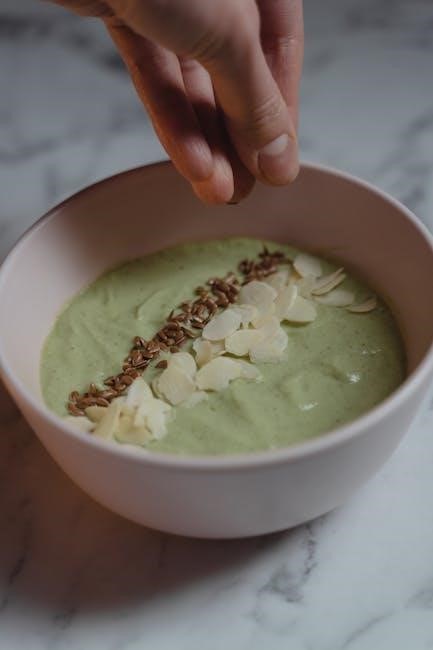
Sample 7-Day Meal Plan
A structured 7-day meal plan offering balanced, histamine-friendly options. Includes breakfast, lunch, dinner, and snacks with fresh, whole ingredients to manage symptoms effectively and nutritiously.
Breakfast Ideas
Start your day with fresh, histamine-friendly options like scrambled eggs, smoothies with blueberries or apricots, or gluten-free pancakes made with coconut flour. Add fresh herbs for flavor without histamine spikes. Opt for coconut milk or almond milk for dairy-free alternatives. Ensure all ingredients are fresh and minimally processed to maintain low histamine levels. These ideas provide a nutritious and delicious breakfast while adhering to dietary restrictions.
Lunch and Dinner Options
Opt for fresh meats like chicken or turkey, paired with steamed or roasted vegetables such as sweet potatoes, zucchini, or green beans. Fresh fish like hake or trout can be grilled or baked for a histamine-friendly meal. Salads with fresh greens, cucumbers, and carrots, dressed with olive oil and fresh herbs, are also great options. Avoid processed or aged ingredients to maintain low histamine levels and ensure meals are nutrient-rich and flavorful.
Snack Suggestions
Healthy snacks include fresh fruits like apples, mangoes, and blueberries, which are naturally low in histamine. Sliced cucumbers, carrots, or bell peppers with a sprinkle of fresh herbs make for crunchy, satisfying options. Freshly made veggie sticks with olive oil or coconut-based dips are also ideal. Avoid fermented or processed snacks to keep histamine levels in check and maintain energy throughout the day.
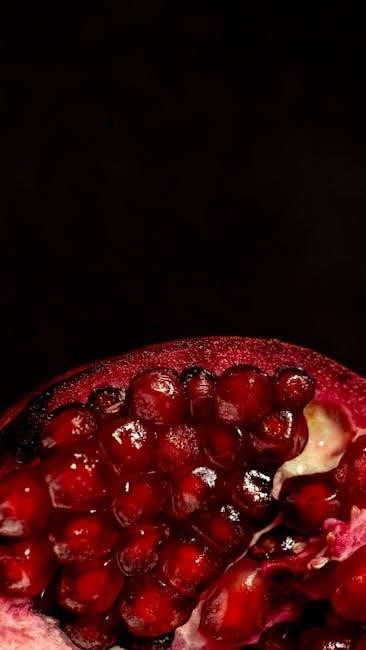
Importance of Professional Guidance
Consulting a healthcare provider or dietitian ensures a personalized approach, helping manage symptoms effectively while maintaining nutritional balance on a low histamine diet plan.
Working with a Healthcare Provider
Collaborating with a healthcare provider ensures a tailored low histamine diet plan, addressing specific symptoms and nutritional needs. They help identify triggers, monitor progress, and adjust strategies for optimal results.
Ensuring Nutritional Balance
A low histamine diet requires careful planning to maintain essential nutrients. Focus on diverse fresh meats, fish, fruits, and vegetables while avoiding high histamine foods. Regular consultations with a dietitian help ensure all nutritional needs are met without compromising health benefits;
Managing Histamine Intolerance Symptoms
Lifestyle changes and supplements can help alleviate symptoms. Fresh diets, stress reduction, and avoiding triggers are key to managing histamine intolerance effectively.
Lifestyle Changes and Supplements
Incorporating lifestyle changes such as stress reduction and regular exercise can help manage histamine intolerance. Supplements like vitamin C, omega-3 fatty acids, and probiotics may also alleviate symptoms. Ensuring adequate hydration and avoiding histamine-releasing foods are crucial. Consulting a healthcare provider for personalized advice is recommended to optimize symptom relief and overall health effectively.
Common Challenges and Solutions
Navigating social eating and limited food options are common challenges. Planning meals ahead and using histamine-friendly substitutes can help maintain compliance and reduce frustration effectively.
Navigating Social Eating and Limited Options
Social eating can be challenging due to limited low-histamine options. Plan meals ahead, communicate with hosts, and opt for fresh, unprocessed foods. Substitute high-histamine ingredients with alternatives like fresh herbs for seasoning. Carry snacks to ensure availability. Focus on restaurants offering grilled or fresh dishes, avoiding fermented or aged items. Meal planning and preparation are key to maintaining compliance and reducing stress in social settings.
Start your low histamine journey with confidence using resources like meal plans and guides. Seek professional guidance to tailor the diet to your needs and ensure success.
Encouragement to Start the Diet
Embrace the low histamine diet with confidence! Fresh, whole foods and tailored meal plans can transform your health. Start small, track progress, and celebrate improvements. With support from professionals and online resources, you’ll find delicious and sustainable options to manage symptoms and enhance your well-being. Take the first step today for a healthier tomorrow.
Resources for Further Guidance
Explore comprehensive guides like The Complete Low Histamine Diet Cookbook and downloadable meal plans. Websites offer detailed food lists and recipes. Join support communities for shared experiences and tips. Utilize professional resources from registered dietitians to ensure a balanced approach. These tools empower you to navigate the low histamine lifestyle with confidence and clarity.
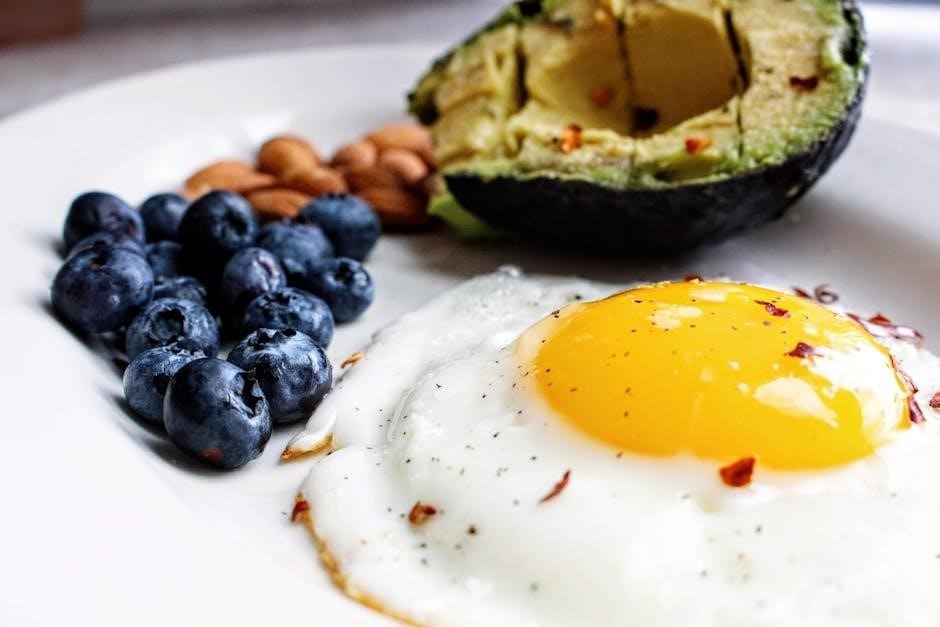
Recommended Resources
Discover essential guides like The Complete Low Histamine Diet Cookbook and Low Histamine Meal Plan PDFs. These resources offer recipes, food lists, and expert advice for managing histamine intolerance effectively.
Books and Websites
Valuable resources include The Complete Low Histamine Diet Cookbook with 1500 recipes and expert guides. Websites offer detailed food lists, meal plans, and tailored advice for histamine intolerance and mast cell activation. These tools provide comprehensive support for implementing a low histamine lifestyle effectively and sustainably.
Support Communities and Meal Plan PDFs
Joining support communities provides emotional encouragement and practical advice. Meal plan PDFs, like the 4-week Low Histamine Meal Plan, offer structured guidance with recipes and grocery lists. These resources empower individuals to manage histamine intolerance and mast cell activation confidently, ensuring a sustainable and enjoyable dietary approach.